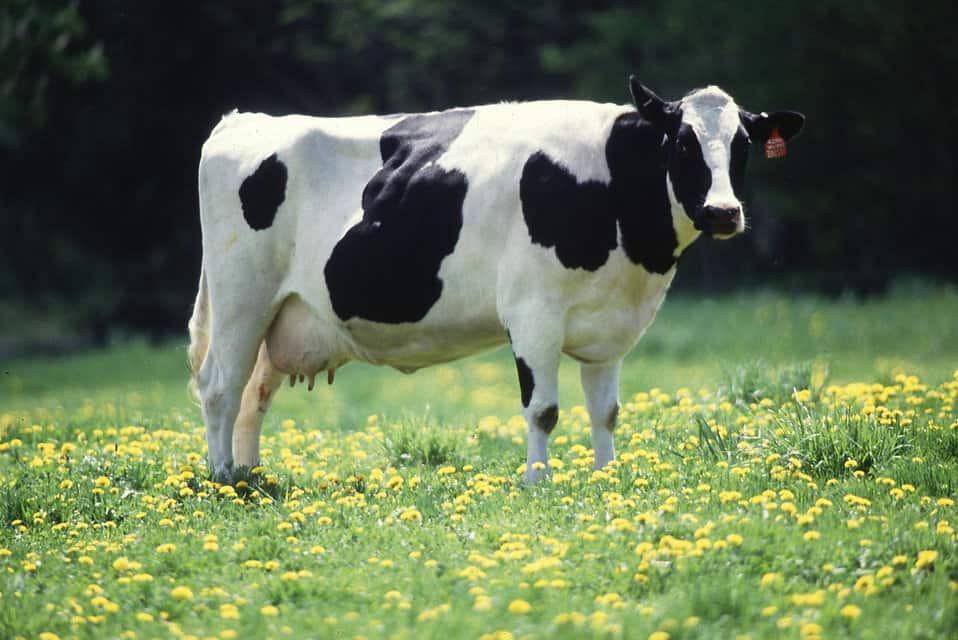Anyone who has visited a working dairy farm knows that it is an ideal breeding ground for flies. The combination of wet decaying organic material and animal waste provide flies with all they need to become not only a nuisance but a threat to the health and well-being of the herd.
Why are flies so bad on dairy farms?
Managing fly infestations in dairy farms is challenging, even for the best of pest management professionals. Dairy barns are open-air structures and in summer when temperatures rise, the fly life cycle can accelerate and increase pest pressure.
“Flies can go from eggs to adults in as little as five days during summers, and that presents a challenge to keeping populations in check,” says Jason Everitt, technical director for Rottler Pest Solutions.
How fast can a fly population grow?
Under optimal conditions, an uncontrolled house fly population can explode from one male and female fly to 125,000 in just 14 days.
This illustrates why getting fly populations under control is vitally important to dairy farmers. In addition to being a nuisance, flies are known vectors of disease and bacteria, and the stress they place on continually growing herds can lead to reduced milk production and poor animal health.
How do flies impact dairy farmers?
“Dairy farmers measure success in the number of gallons produced, and flies can negatively impact that number if not managed properly,” adds Everitt.
How do farms treat for flies?
Everitt says dairy farms have herds with cows of different ages from newborns to adults, and treatment options can be limited depending on the area. Rottler uses a multi-tool approach that is customized to meet the specific needs of each farm.
The system includes:
- on-animal treatments using misting systems installed above pen areas
- misting animal waste runoff areas and lagoons from ATVs
- insect growth regulators (IGRs)
- contact insecticides
- strategic use of granular baits.
The frequency of treatments depends on the level of pest pressure and can be a weekly, bi-weekly, or monthly service.
“Our goal is to always reduce fly population levels and work with a farmer’s budget and operational goals,” says Everitt. “We are geographically closer to the farms we service, and this allows us to respond quickly to issues that come up between scheduled service visits.”
Rottler has also invested in the latest equipment and application procedures and will bring in animal health experts to partner on a holistic approach that looks to eliminate fly populations as well the well-being of the animal.
Sanitation Is Key
As is the case with virtually all pests from rodents to cockroaches to flies, poor sanitation practices will lead to problems. If sanitation isn’t looked after, insecticide treatments will not be as effective, and the pest problem will persist.
Regardless of the size of the herd or farm, establishing and following a good sanitation program will help reduce the threat pests – especially flies – present.
Four Tips for Good Sanitation in Dairy Farms
- Remove all manure from livestock pens as frequently as possible. It is best to clean the pens once a week. Using sawdust instead of other materials for animal bedding reduces fly development. A clean livestock barn has fewer fly problems.
- Spread the manure thinly outdoors so that fly eggs and larvae will be killed by drying, or stack the waste and cover with a black, plastic tarp.
- Eliminate silage seepage areas, wet litter, manure stacks, old wet hay or straw bales, and other organic matter accumulations that may attract flies anywhere on the farm. Wet feed remaining at the ends of mangers will breed flies.
- Provide proper drainage in barnyards. Use clean gravel and other fill to eliminate low spots in livestock yards. Proper grading and tiling can reduce wet barnyards. Keep water troughs and hydrants leak-free.
If your company is looking for a pest management partner that goes the extra mile to design and deliver comprehensive pest management programs, call Rottler Pest Solutions at [phone-number] for a free quote or consultation.


